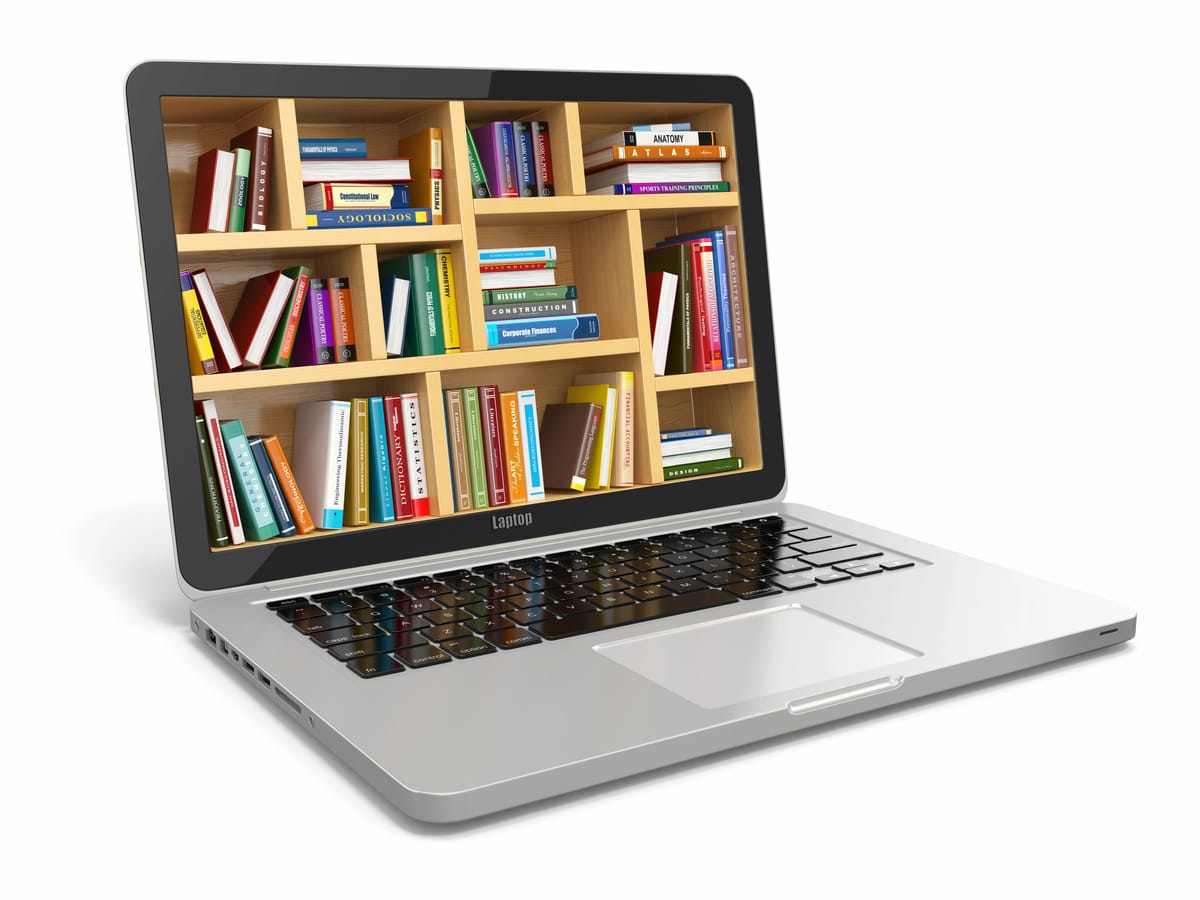Indie authors often rely heavily on digital marketing and promoting their books on e-retailer platforms. But millions of readers still get their books from libraries and bookstores. In 2023, U.S. bookstore sales hit $8.3 billion, and Gen Z and millennials are visiting libraries far more than previous generations, according to research by the American Library Association in 2023.
Indie authors who want to break into bookstores and libraries must take a page from traditional publishing—but must work to overcome the built-in advantages that traditional publishers have when putting their books in stores and libraries.
Table Stakes: Act Like a Trad Author
A significant number of acquisitions managers at both bookstores and libraries have a bias against indie authors. “I read a lot of indie authors,” says Genesis Hansen, director of library and cultural services for the City of Mission Viejo, “and while I love some, many books are poorly done and will never make it into our collection.”
To battle this perception, indie authors must mimic traditional publishers when approaching bookstores and libraries.
Quality
Although it should go without saying that any book indie authors submit should be indistinguishable in quality from traditionally published books, acquisition teams receive thousands of requests to carry books that don’t meet minimum quality standards. “I can’t stress this enough,” says Hansen. “Invest in the quality of your book. Professional editing, cover design, and sales material are essential.”
Mark Leslie Lefebvre, director of business development at Draft2Digital, agrees. “Differentiate yourself from the thousands of other submissions. If you have several books in a series, make sure that’s clear. You’ll stand out from other authors as someone who’s written enough books to meet readers’ expectations.”
Availability
Books must be available in Ingram’s catalog in order to be considered by brick-and-mortar retailers. “Most libraries and bookstores will not order from Amazon,” Lefebvre says. Hansen agrees and says that her library will only purchase books from Amazon as a last resort.
When setting up distribution on the IngramSpark website, the indie author’s dashboard for the Ingram catalog, Lefebvre recommends choosing at least a 53 percent discount and allowing returns. “Bookstores need at least a 40 percent discount to make money,” Lefebvre says, “and a 53 percent discount gives Ingram their cut while providing that minimum discount to bookstores.”
Although nearly all bookstores and libraries order from Ingram, “don’t bother advertising in the Ingram catalog,” Hansen says. “Everything is ordered online, and no one sees those ads.”
Focus on the Front List
Indie authors rarely do marketing work pre-publication, but for bookstores and libraries, promoting books to bookstores two to three months before release—just like traditional publishers do—can be more successful. “Bookstores and libraries focus on the front list,” Lefebvre says. “Promote books that will be released soon or that have been released in the last six months.”
Sell Sheets and ARCs
A sell sheet, also called a one sheet, is a single sheet of paper that provides all the relevant information distributors may need about a book in order to decide whether to purchase it, such as print dimensions, page count, ISBNs, and genre or BISAC categories. Sell sheets must include a high-resolution graphic of the cover; a description, which indie authors often call a blurb; and purchasing information. Not all stores or libraries require them anymore, but it’s best to have one prepared in case a seller requests it.
Clearly communicate how and where acquisitions teams can order the book on your sell sheet. The title, cover picture, and ISBN must be included in all materials. Also specify that the book is available on Ingram. For libraries, include which library distributors carry the ebook, such as Overdrive, Baker & Taylor, and Hoopla. Authors often include Amazon, Kobo, Apple Books, and other e-retailer icons on their sites; as Lefebvre suggests, “Treat library distributors the same way you treat e-retailer logos on your website, and include their logos too.”
Many bookstores and libraries also look for positive, professional reviews in the sell sheet. Hansen’s library looks for quotes from review publications like Kirkus Reviews, Library Journal, or School Library Journal—Amazon or Goodreads reviews aren’t enough. Quotes from second-tier review sites or authors with bestseller credentials won’t be as powerful as Kirkus Reviews, but they’re better than customer reviews.
Taglines, author photos, and author bios are optional. Comparisons to other similar titles—often called comp titles—can help, too. “Acquisitions people must be able to figure out if your book is in tune with what their visitors and customers already want,” Lefebvre says. “Diane Capri’s Hunt for Jack Reacher series is a perfect example of a built-in audience: readers of Lee Child’s Jack Reacher books.”
Including a physical copy of the book, especially an ARC (advance reader copy) if the book isn’t released yet, can differentiate indie authors. Local authors can include that information as well. “Defining yourself as a big fish in a small pond can work,” Lefebvre says. “A lot of booksellers and librarians want to feature local authors.”
Be aware, however, that ARCs cost money and are not always effective. “People love free books,” says Hansen, “but no one can guarantee where those ARCs will end up.”
While having sell sheets and ARCs available is a best practice, many bookstores and libraries are moving away from them. Emily Fluke, author of the Bewitcher’s Beach series, got her books into Barnes & Noble stores throughout California. “I didn’t provide any kind of ARC or sell sheet,” says Fluke. “Instead, I provided my book’s information, and they looked it up themselves to start the approval. This was all done over email.”
Hansen says most books are now submitted online. “We rarely see sell sheets anymore. We have a form on our library website.” Despite Fluke’s experience, Hansen doesn’t believe email is effective. “We get a gazillion emails asking us to read books,” she says. “No one has time to read everything that’s submitted.”
Gain Your Indie Advantages
Although bookstores and libraries often expect indie authors to act like traditionally published authors in some ways, indie authors have some built-in advantages.
Pricing for Libraries
Traditional publishers take pains to make books as expensive for libraries as possible. Their $20 print book can often cost triple that for libraries, and physical books become damaged or get lost. Ebooks from traditional publishers often cost $50 or more—and have what Hansen calls “crazy DRM schemes,” where the ebook expires after twenty-five or thirty checkouts.
Indie authors have the advantage here, especially with digital copies, such as ebooks and audiobooks. An author who sets the ebook library price at triple the retail price will often sell the title for $12 to $18, $30 less than a traditionally published ebook, and the ebook or audiobook will not expire. This means libraries can order more indie books and stay within their budgets. “Genre readers are voracious,” Hansen says, “and they’re much more likely to take a chance on an indie author they haven’t heard of.” Less expensive indie books are part of many libraries’ collection development strategies.
The Personal Touch
The most successful indie authors build a relationship with the library, the bookstore, and the people who run acquisitions. Traditional publishers’ marketing departments don’t develop these relationships—not only does the strategy not scale, but it’s also not how the publishers do business.
“Start with your local libraries,” Hansen suggests. “Find out who is in charge of collection development, but any librarian who likes a new author is sure to talk it up with their colleagues.”
Lefebvre agrees that personal relationships are critical for success. “You’ll have a better chance if you’re a customer with a good relationship with the bookstore.” This isn’t just for independent bookstores, says Lefebvre: “Each of the chain bookstore locations has a ton of autonomy. They can make decisions over which authors to carry and what events to host.”
Playing up an author’s local angle isn’t just for sell sheets. “Our local authors’ collection is much more indie-friendly,” Hansen says. This advantage extends to other cities or locales where books may be set, giving authors a perfect excuse to contact that city’s local libraries or bookstores. “So many books are set in New York,” Hansen says. “Libraries are keen to carry books set locally.”
Libraries will often host local author events because traditional publishers, as Hansen reports, aren’t doing as many author events post-pandemic. The Mission Viejo Library held two local author book fairs in the last year, giving the authors an opportunity to sell their books and do readings. Every author who brought a book for the library had it added to the collection. “The book fairs started because local authors ganged up and convinced the library to do it,” Hansen says.
“While traditional publishers have certain advantages,” says Lefebvre, “indie authors have different opportunities. It’s up to each author to do what works for them to get into bookstores and libraries.”
Paul Austin Ardoin


